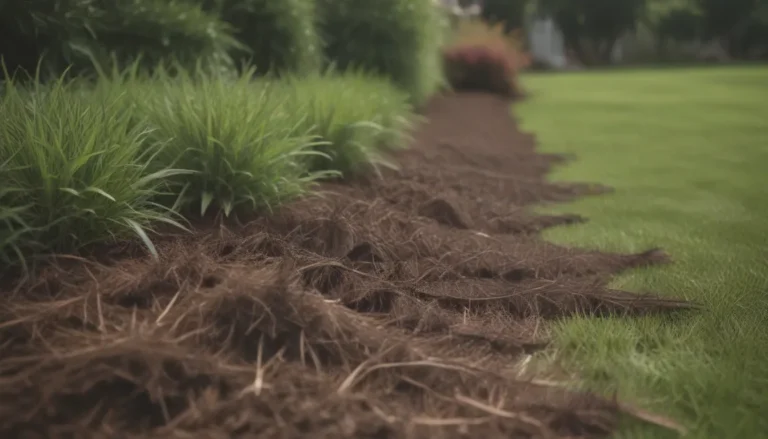The Ultimate Guide to Fertilizing and Maintaining Your New Lawn

Congratulations on creating a beautiful new lawn! Whether you have decided to start from seed or sod, proper fertilization is essential for the health and longevity of your grass. In this comprehensive guide, we will explore everything you need to know about fertilizing and maintaining a new lawn, from the importance of fertilizing to how to choose the right fertilizer and when to apply it.
Why Fertilize Your New Lawn?
Newly planted lawns often struggle to establish themselves due to compacted, damaged soil that lacks essential nutrients. Fertilizing your lawn provides the necessary nitrogen and phosphorus to support strong growth and root development. Without proper fertilization, your lawn may become patchy, weak, and vulnerable to weeds and pests. Additionally, erosion and runoff can further damage the health of your lawn.
A laboratory soil test is a valuable tool that can help you determine the specific nutrient deficiencies in your soil. This information will guide you in selecting the right fertilizer for optimal results. It is important to note that some states require a soil test before applying fertilizers containing phosphorous to prevent environmental damage.
Tip:
- Fertilizers are labeled with an NPK ratio that indicates the percentages of nitrogen, phosphorus, and potassium they contain.
- Nitrogen gives grass its dark green color, phosphorus supports root development, and potassium helps prevent disease.
Understanding Starter Fertilizer
Starter fertilizers are specially formulated to provide the nutrients required by new lawns. These products typically have a higher concentration of nutrients, such as nitrogen, phosphorus, and potassium, to support rapid growth and root establishment. Look for labels that indicate “starter” or “turf builder” to ensure you are using the right product for your lawn.
When starting from seed, a balanced blend of nutrients like 10-10-10 or 20-10-10 is suitable for promoting healthy growth. For sodded lawns, choose a fertilizer with a higher nutrient percentage, such as 16-16-16. The amount and type of starter fertilizer you use will depend on your soil’s condition, so it is crucial to refer to your soil test results for guidance.
How to Apply Starter Fertilizer
When applying starter fertilizer to your new lawn, opt for a granular type that can be spread evenly across the soil. While ready-to-spray products are convenient for targeting specific areas, granular fertilizers are more cost-effective for larger lawns. You can apply starter fertilizer either before or after planting, depending on your preference and convenience.
If you choose to till the fertilizer into the soil before planting, ensure that it is evenly distributed to provide immediate access to the seed or sod. This method can accelerate germination and root growth without causing damage to delicate roots. Alternatively, you can apply the starter fertilizer after planting and water it in thoroughly to promote absorption.
Tip:
- Avoid using “weed and feed” fertilizers with grass seed or sod, as they may hinder germination and root growth.
- Wait at least three to four months before using herbicidal fertilizers on established lawns.
When to Feed Your New Lawn
After planting your lawn, it is essential to monitor its progress and provide additional fertilization as needed. A second application of starter fertilizer is recommended once the seed has germinated or the sod has rooted in. You can test the lawn’s readiness by gently tugging on the grass to check for root establishment.
Fertilizing a Newly Seeded Lawn:
- Depending on your climate and turf grass variety, consider a second feeding within four to eight weeks after sowing seed.
- Choose a fertilizer with a higher nitrogen content, such as 24-25-4, to support ongoing growth and development.
Fertilizing a Newly Sodded Lawn:
- A newly sodded lawn can benefit from a second application of starter fertilizer like 16-16-16.
- Adjust the fertilizer type and amount based on your grass variety and climate to ensure optimal results.
Establishing a Regular Fertilization Schedule
Once your new lawn has received two applications of starter fertilizer and has established itself, you can transition to a regular fertilization schedule. The frequency of fertilization will depend on your lawn’s specific needs, soil type, and climate conditions.
Some experts recommend feeding your lawn three times a year in early spring, mid-summer, and early fall to maintain its health and vibrancy. However, others suggest that a single application in either early spring or fall may be sufficient for an established lawn. It is essential to monitor your lawn’s health and adjust your fertilization schedule accordingly.
Tip:
- Avoid over-fertilizing your lawn, as this can cause damage and lead to yellowing or brown spots.
- Pay attention to signs of excess fertilizer, such as patchy dead spots or overly lush growth, and adjust your application as needed.
Conclusion
Fertilizing a new lawn is a crucial step in establishing a healthy and vibrant outdoor space. By understanding the importance of fertilization, choosing the right products, and following a regular maintenance schedule, you can ensure that your lawn thrives for years to come. Remember to conduct a soil test, select the appropriate fertilizer based on your lawn’s needs, and monitor your lawn’s health to achieve the best results.
With these tips and guidelines, you can enjoy a lush, green lawn that enhances the beauty of your home and provides a welcoming outdoor environment for your family and guests. Happy gardening!





